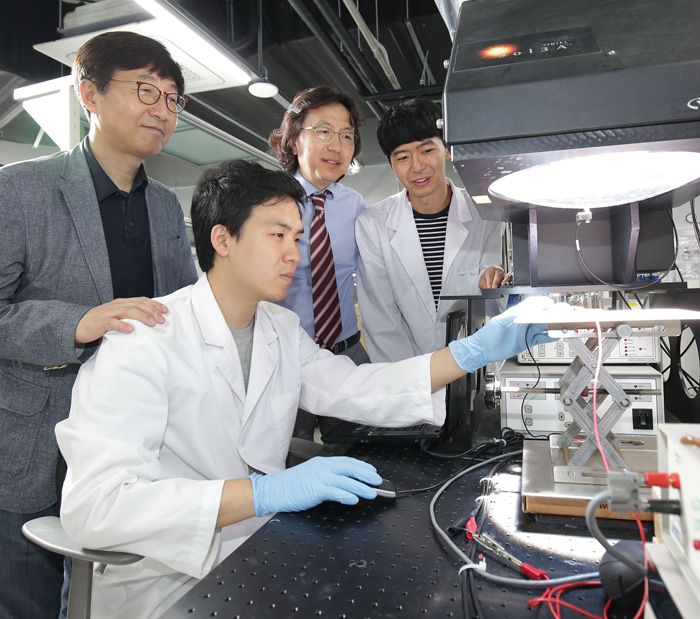Research Stories
Perovskite Solar Cells with Inorganic Electron & Hole Transport Layers Exhibit Long-Term Stability
Research groups from Sungkyunkwan University have recently reported that they developed highly stable perovskite solar cells under extreme environments by improving passivation techniques of perovskite solar cells.
Energy Science
Prof.
SHIN, HYUN JUNG
Research groups from Sungkyunkwan University have recently reported that they developed highly stable perovskite solar cells under extreme environments by improving passivation techniques of perovskite solar cells. Perovskite is the name of a crystal structure, and for the perovskite solar cells, the materials refer to special compositional groups that have organic and inorganic halide ions. Perovskite solar cells have shown extremely rapid improvement of power conversion efficiency with low processing costs. However, the short-term lifetime of the device and the poor stability of the material under moisture, heat, light, and electrical biases remain to be overcome for commercialization.
The architecture of the solar cells has inverted planar devices (so-called p-i-n devices; light illumination through hole transport layers) with FTO/NiO/Perovskite/PCBM/AZO/Ag. AZO has been deposited via atmoic layer deposition method, which produces pinhole-free, uniform, and dense films. The AZO-deposited perovskite solar cells exhibited similar performances to the control solar cells due to negligible charge transporting retardation by the 3 orders of magnitude higher conductivity of AZO compared to that of PCBM. The ALD-grown AZO (ALD-AZO) layers also acted as dense, uniform, and impermeable passivation layers that prevented ingress of water into the perovskite films, egress of the volatile components of perovskite when heated, and interfacial degradation between the perovskite-PCBM heterojunction and the Ag electrode caused by unfavorable chemical reactions.
The authors found that the stability of perovskite solar cells with an AZO layer is superior to the control devices. While the control solar cells degraded rapidly under light illumination at room temperature in spite of an additional passivation layer, AZO-perovskite solar cells maintained 99.5% of their initial efficiency for 500 hours. The unique role of AZO, distinguished from additional passivating layers, is to prevent moisture penetration as well as interdiffusion at the perovskite/Ag interface when illuminated. These perovskite solar cells showed their stability in a more severe environment, exhibiting a power conversion efficiency of 18.45% and retaining 86.7% of their initial efficiency for 500 hours under continuous 1-sun illumination at 85°C in ambient air with electrical biases (at the maximum power point).
This research on highly stable perovskite solar cells with inorganic charge transport layers has been published in Advanced Materials (IF 19.791) as an inside cover story by Prof. SHIN and Mr. SEO (Department of Energy Science) and Prof. PARK (School of Chemical Engineering) at Sungkyunkwan University.
Published article:
Seo, S., Jeong, S., Bae, C., Park, N.-G., and Shin, H., "Perovskite Solar Cells with Inorganic Electron- and Hole-Transport Layers Exhibiting Long-Term (≈500 h) Stability at 85°C under Continuous 1 Sun Illumination in Ambient Air.", Advanced Materials, 1801010 (2018).

